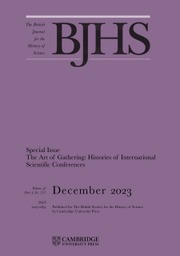No CrossRef data available.
Article contents
Bernardo Gonçalves, The Turing Test Argument New York: Routledge, 2023. Pp. 238. ISBN 978-1-032-29157-4. £130.00 (hardback).
Review products
Bernardo Gonçalves, The Turing Test Argument New York: Routledge, 2023. Pp. 238. ISBN 978-1-032-29157-4. £130.00 (hardback).
Published online by Cambridge University Press: 04 November 2024
Abstract
An abstract is not available for this content so a preview has been provided. Please use the Get access link above for information on how to access this content.
Information
- Type
- Book Review
- Information
- The British Journal for the History of Science , Volume 58 , Special Issue 2: Rocket Stars: Astrocultural Genealogies in the Global Space Age , June 2025 , pp. 365 - 366
- Copyright
- © The Author(s), 2024. Published by Cambridge University Press on behalf of British Society for the History of Science


